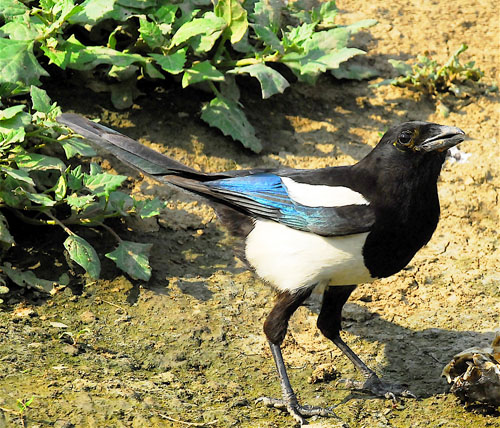
BIRDS OF THE SULGRAVE AREA
(Home)
MAGPIE (Pica pica)

The magpie, with its handsome black and white plumage, long tail and chattering call, is one of the most easily recognised of our birds. It is also one of the most controversial: like Marmite, you love it or hate it. Widely disliked because of its predatory habits its food includes eggs and nestlings, hence the long-term persecution by gamekeepers – it has on the other hand often been kept as a pet and was at one time, it is reported, “the cherished neighbour of every farmer”.
Undoubtedly its numbers have increased greatly in recent years, and the songbird population had dropped in many areas, but the one fact may not be the main cause of the other (the activities of man, such as the destruction of natural habitats and the use of herbicides and pesticides, have probably been an even more important factor). Scientific research seems to confirm that, in rural areas at least, the increase in the magpie population has had little or no effect on that of most songbirds. Nature, left to itself, will always strike a balance between predator and prey. The magpie undoubtedly benefits from such man-provided opportunities as roadkill and, especially in urban parts, cast-aside food. Normally its diet consists mainly of vegetative matter in winter and beetles, worms and other invertebrates in summer. In any case, it’s only “doin’ what comes naturally”, so we mustn’t condemn it as a villain.
The magpie is the subject of much folklore and superstition. To see a single one is often regarded as unlucky, and some people will greet it with “Good morning, Mr Magpie”, for example; others will turn round three times to cancel out the bad luck.
There are many variations on the rhyme
One for sorrow, two for joy,
Three for a girl, four for a boy,
Five for silver, six for gold,
Seven for a secret never to be told….
Magpies have also a reputation as thieves (hence Rossini’s opera La Gazza Ladra – The Thieving Magpie). They are certainly attracted to small bright objects and will often carry them off.
Photo: John Sheppard. Text: George Metcalfe.
See Bird Archive for other birds in this series.